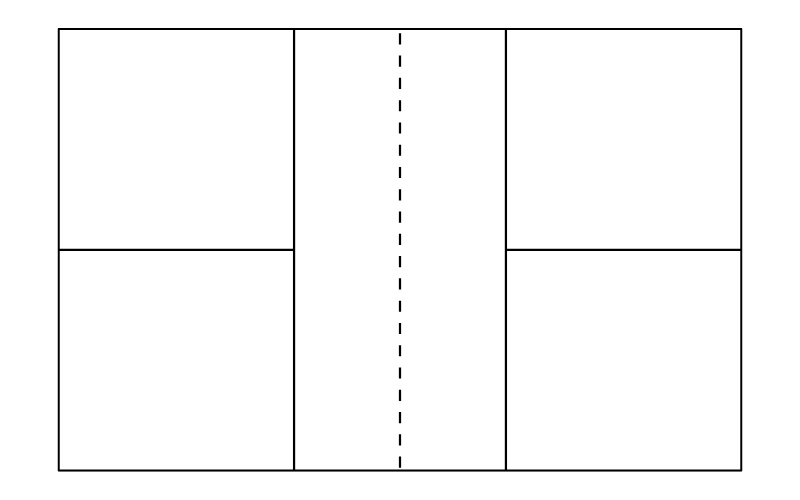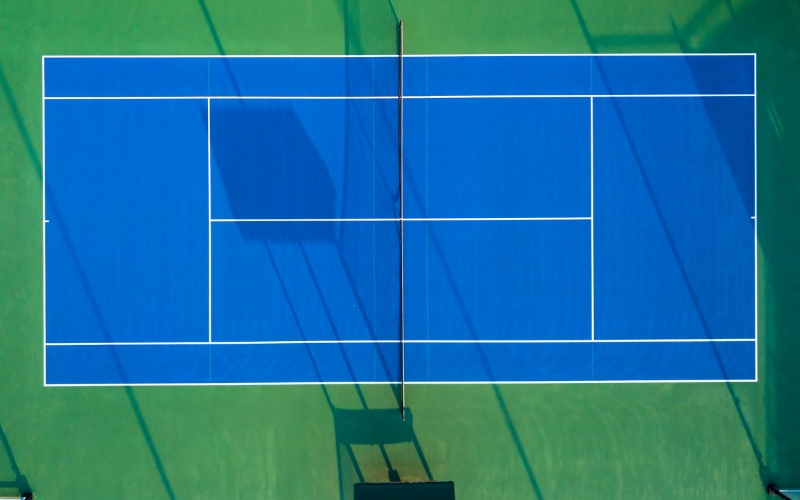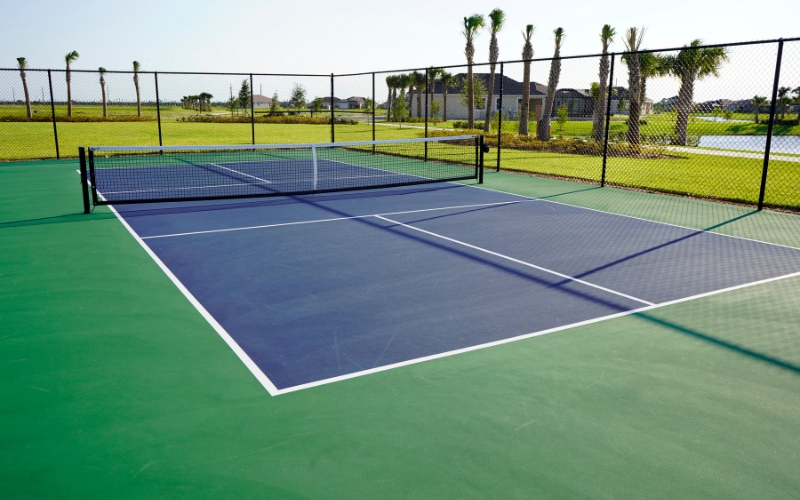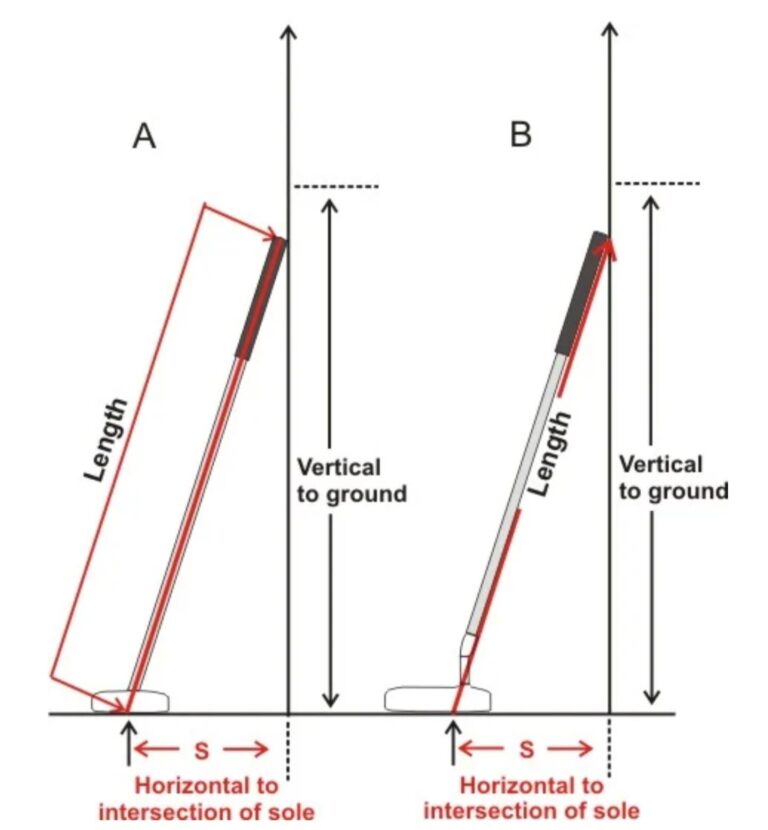Pickleball Court Measurements: Complete Guide for Players and Enthusiasts
Pickleball has taken the world by storm in recent years, becoming one of the fastest-growing sports in the United States and beyond. Whether you’re a beginner learning the basics or a seasoned player competing in tournaments, understanding pickleball court measurements is essential. From the net height to the exact dimensions of the kitchen, every part of the court plays a role in ensuring fair play.
This guide dives deep into everything you need to know about pickleball courts. We’ll cover the sport’s history, official court dimensions, surface specifications, line rules, net standards, and terminology. By the end, you’ll have a complete understanding of how a court is built, measured, and maintained.
History of Pickleball
Pickleball was invented in the summer of 1965 on Bainbridge Island, Washington. Three friends—Joel Pritchard, Bill Bell, and Barney McCallum—wanted to create a fun backyard game for their families. Using a badminton court, ping-pong paddles, and a perforated plastic ball, they developed the rules of what would later become pickleball.
The game’s name is often said to come from Pritchard’s dog, Pickles, who would chase after the ball. Another story claims it originated from the term “pickle boat,” used in rowing when a team is made up of leftover rowers. Regardless of its origin, the quirky name stuck.
In the early years, pickleball courts were often makeshift, drawn onto driveways or existing badminton courts. As the sport grew, standardized pickleball court dimensions were introduced by the USA Pickleball Association (USAPA). Today, pickleball is played by millions worldwide, with dedicated facilities and tournaments across North America, Europe, and Asia.
What Are the Pickleball Court Measurements?
A pickleball court measures 20 feet wide and 44 feet long, the same size used for both singles and doubles matches. Unlike tennis, where doubles courts are wider, pickleball uses the same measurements for all play formats.
Here’s a breakdown of the court layout:
- Sidelines – Run along the length of the court (44 feet).
- Baselines – Run parallel to the net, forming the back boundary lines (20 feet wide).
- Non-Volley Zone (The Kitchen) – A 7-foot area on both sides of the net where volleys are not allowed.
- Service Courts – Each side of the court is divided into left and right service areas by a centerline.
- Net Placement – The court is split evenly into two 22-foot halves by the net.
Comparison With Other Courts
- Pickleball Court: 20 x 44 feet
- Badminton Court (doubles): 20 x 44 feet (identical size)
- Tennis Court (doubles): 36 x 78 feet (much larger)
- Table Tennis Table: 5 x 9 feet (miniature comparison)
This makes pickleball unique—its court is smaller than tennis, but larger than table tennis, striking a balance between accessibility and strategy.
Pickleball Court Diagram

A visual guide makes it much easier to understand pickleball court measurements. Imagine the court divided into key zones:
- Baselines – Back boundary lines at each end.
- Sidelines – Side boundaries along the length.
- Centerline – Divides each side into left and right service courts.
- Non-Volley Zone Line – Marks the 7-foot kitchen boundary.
- Service Courts – Rectangles on either side of the centerline where serves must land.
- Net – Positioned in the middle, dividing the court evenly.
A proper pickleball court diagram should be included when teaching beginners or planning construction. Most diagrams highlight the measurements of pickleball court, showing the kitchen clearly marked since it’s one of the most important rules in pickleball.
Pickleball Surface Specifications
The surface of a pickleball court directly affects gameplay, safety, and durability. The USA Pickleball Association provides recommendations for surfaces:
- Outdoor Courts: Often made from asphalt or post-tension concrete with an acrylic coating. These provide durability and weather resistance.
- Indoor Courts: Typically wood or synthetic surfaces, similar to basketball or volleyball courts.
- Color Standards: Green, blue, and sometimes purple are common, with white or yellow boundary lines for visibility.
Key Considerations
- Texture: Slightly textured to prevent slipping but not so rough that it wears down balls quickly.
- Cushioning: Some courts use cushioned acrylic to reduce joint impact, especially important for older players.
- Maintenance: Outdoor courts require resurfacing every 5–8 years depending on usage and climate.
Line Rules and Markings
Lines on a pickleball court are more than just boundaries—they define the rules of play.
- Line Thickness: All lines should be 2 inches wide.
- Colors: Typically white or yellow for contrast.
- In or Out Rule: A ball that lands on a line is considered “in.”
- Kitchen Line: Part of the non-volley zone, meaning if the ball touches this line on a serve, it’s a fault.
Court Marking Tips
For DIY players, temporary courts can be marked using chalk, painter’s tape, or vinyl court tape. For permanent courts, painted lines with acrylic paint are recommended.
The Pickleball Net
The net is a critical element of the game. The official pickleball net height is:
- 36 inches (3 feet) at the sidelines.
- 34 inches at the center.
The net spans 22 feet in length to cover the court width (20 feet) plus 1 foot of side posts on each end.
Net Materials
- Nylon or polyester mesh is most common.
- Cord tension is important to prevent sagging.
- Portable nets are available for home or temporary courts.
The slightly lower center net height allows for fast-paced rallies, making the game exciting yet accessible.
Pickleball Court Terms You Need to Know

To fully grasp pickleball, it helps to understand the language used on the court:
- Kitchen: The non-volley zone, 7 feet from the net.
- Dink: A soft shot aimed at the kitchen to force opponents forward.
- Fault: A violation of rules (e.g., ball out of bounds, hitting into net).
- Baseline: The back boundary line.
- Volley: Hitting the ball before it bounces.
- Rally: A sequence of shots between teams until a fault occurs.
Learning these terms helps beginners quickly adapt to the sport.
Indoor vs Outdoor Pickleball Courts
While the pickleball court measurements are identical indoors and outdoors, differences exist in gameplay and design.
Indoor Courts
- Surface: Usually hardwood or synthetic.
- Ball Type: Indoor pickleballs are lighter, with larger holes for better control.
- Environment: No wind interference, consistent lighting.
Outdoor Courts
- Surface: Asphalt or concrete with acrylic coating.
- Ball Type: Outdoor pickleballs are heavier, with smaller holes to resist wind.
- Challenges: Sunlight, wind, and weather conditions affect play.
Both settings have unique advantages, but many players find outdoor pickleball more exciting due to environmental variables.
Building Your Own Pickleball Court
If you’re considering building a pickleball court at home or in your community, here are some key points:
Space Requirements
- Minimum playing area: 30 feet wide x 60 feet long.
- Ideal playing area: 34 feet wide x 64 feet long.
This extra space allows for movement beyond the boundaries.
Cost Estimates
- DIY court (temporary lines + portable net): $200–$500.
- Professional outdoor court construction: $20,000–$40,000 depending on surface and location.
Tennis Court Conversion
Many tennis courts are being repurposed into pickleball courts. A single tennis court can fit up to four pickleball courts, making it cost-effective.
Frequently Asked Questions (FAQs)
1. How much space do you need for a pickleball court?
A minimum of 30 x 60 feet is required, though 34 x 64 feet is recommended for safe play.
2. Can you play pickleball on a tennis court?
Yes. A tennis court can be converted using temporary lines and portable nets.
3. How high is a pickleball net compared to tennis?
A tennis net is 36 inches at the center, while a pickleball net is 34 inches at the center and 36 inches at the sidelines.
4. What is the size of the kitchen in pickleball?
The non-volley zone (kitchen) extends 7 feet from the net on both sides.
5. Is the pickleball court the same for singles and doubles?
Yes, the court size remains 20 x 44 feet regardless of whether it’s singles or doubles.
Conclusion
Understanding pickleball court measurements is the first step toward mastering the game. From the 20 x 44-foot layout to the 7-foot kitchen and the 34-inch net height, every detail ensures fair, consistent, and exciting play.
Whether you’re converting a tennis court, setting up a backyard game, or building a professional facility, knowing the correct dimensions and rules is crucial. With its rich history, simple layout, and growing popularity, pickleball is more than just a pastime—it’s a sport that bridges generations and brings communities together.
So grab your paddle, step onto the court, and experience why pickleball has captured the hearts of millions worldwide.







